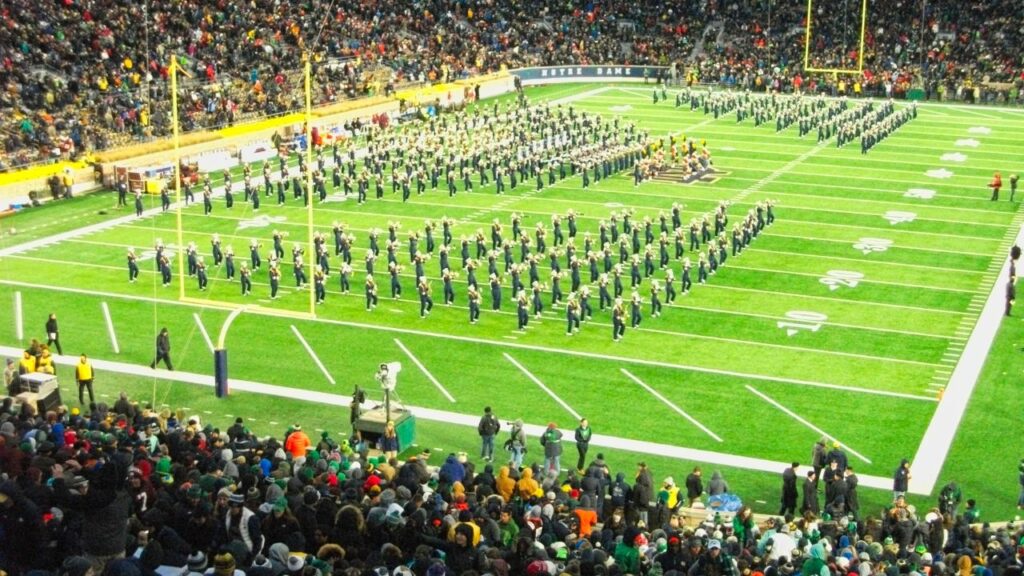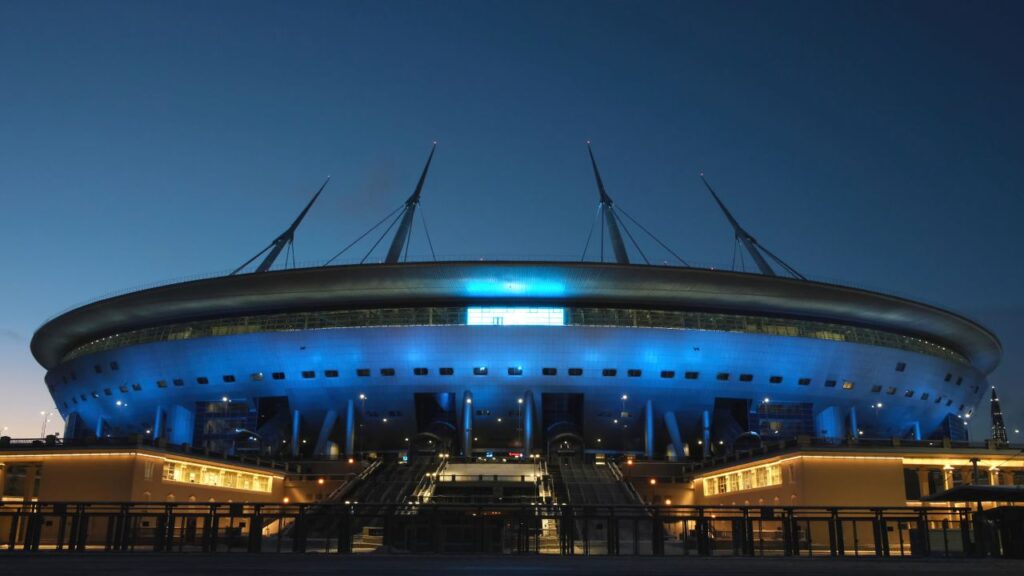The 2026 FIFA World Cup stands out as not only the largest football tournament to date but a remarkable beacon of unity, where nations converge in passion and pride for the beautiful game. With the tournament sprawling across three North American giants — the United States, Canada, and Mexico — it embodies a visionary blend of cultural exchange and sportsmanship. This is more than just a competition; it’s a vibrant festival of football that promises to bring together players, fans, and communities from every corner of the globe. As the world anticipates the awe-inspiring matches and pulsating atmospheres to come, the 2026 World Cup’s expanded format and host diversity ignite hopes of breaking barriers and building new connections through football’s universal language. Whether it’s the roar of the crowd, the flash of a player’s skill, or the shared weight of victory and defeat, this tournament is destined to deliver stories that unite and inspire on a global scale.
How the 2026 FIFA World Cup Is Creating Global Unity Through Football
At the heart of the 2026 FIFA World Cup’s ability to unite nations lies its groundbreaking expansion to 48 teams, a bold move that reshapes international football like never before. Previous tournaments capped participation at 32 teams, but now nearly half again as many nations will compete, amplifying representation from every continent and creating unprecedented opportunities for smaller footballing countries to shine on the world’s biggest stage.
The implications are massive: for fans, more nations mean more stories to cheer, more traditions to share, and more underdog narratives to erupt. For players, the expanded field offers a shot at immortality that might never have come before. Importantly, this format intensifies global football engagement, drawing in fresh viewers eager to witness the next breakout star or historic upset.
Structurally, the teams will be divided into 16 groups of three, with the top two from each group advancing to the knockout rounds — a format that promises high-stakes matches right from the get-go. This sparks a fierce tactical challenge, blending freshness with pressure, where every game counts even more. The total count of 80 matches guarantees seemingly endless moments of glory, tension, and heartbreak for fans worldwide.
Highlighting the expanded reach, team allocations from confederations illustrate the broader footprint:
| Confederation | Number of Teams | Key Nations & Emerging Representation |
|---|---|---|
| AFC (Asia) | 8 | Japan, South Korea, Iran, Saudi Arabia, Australia, Uzbekistan, Vietnam |
| CAF (Africa) | 9 | Senegal, Morocco, Nigeria, Egypt, Mali, Burkina Faso |
| CONCACAF (North America) | 6 (including hosts) | USA, Mexico, Canada, Costa Rica, Honduras, Jamaica |
| CONMEBOL (South America) | 6 | Brazil, Argentina, Uruguay, Colombia, Chile, Ecuador |
| UEFA (Europe) | 16 | Germany, France, England, Italy, Spain, Norway, Hungary |
| OFC (Oceania) | 1 | New Zealand |
This dramatic increase in participants not only heightens competition but fosters a spirit of global inclusivity that transcends sporting achievement, weaving a shared narrative where every supporter can see their nation represented on football’s grandest stage.
The role of FIFA and its partners like Adidas, Nike, and Puma becomes key in equipping a world now bigger than ever. Their commitment goes beyond sponsorship — it’s about fueling dreams, providing gear that represents identity, while companies like Coca-Cola, Budweiser, Visa, Mastercard, and Pepsi create immersive fan experiences celebrating football’s infectious spirit. This multi-layered collaboration amplifies the World Cup’s power as a universal connector.

Hosts United: How the United States, Canada, and Mexico Celebrate Football Diversity and Cross-Cultural Bonds
Three nations, three football cultures, and one unprecedented event — the 2026 World Cup’s tri-national hosting arrangement is a testament to football’s power to bridge differences. The United States, Canada, and Mexico each bring distinct histories, styles, and fanbases, making the tournament a vibrant tapestry of cultures and experiences.
The United States leverages its well-developed infrastructure and rapidly evolving football fandom to ensure that stadiums from New York to Los Angeles will buzz with life. Canadian fans, fueled by hosting duties and growing enthusiasm for the sport, showcase their passion and welcome visitors with open arms. Meanwhile, Mexico’s rich World Cup heritage and fervent support add layers of tradition and pride, making matches feel electrifyingly intimate despite massive crowds.
For players and fans alike, this tri-nation setup unlocks cross-border camaraderie and shared regional pride. It invites fans to explore exciting new cities and cultures, from the jazz rhythms pulsating in New Orleans and the hip-hop energy of Toronto to Mexico City’s colorful celebrations. This creates a football carnival unlike anything before, where the journey of the tournament is as memorable as the destination.
The hosts’ automatic qualifications guarantee their spots on the world stage, ensuring home fans can rally behind their heroes. But beyond the pitch, numerous cultural festivals, culinary showcases, and music events intertwine football with the heartbeat of local life. These festivities promise to deepen international understanding — an immersive experience where football fans become lifelong ambassadors of each country’s unique heritage.
- United States highlights: Jazz and blues festivals, iconic BBQ competitions
- Canada highlights: Indigenous art exhibitions, Winterlude celebrations
- Mexico highlights: Day of the Dead celebrations, folkloric dances
Such a mixture of traditions fuels dialogue and mutual respect, exemplifying how the World Cup, far from just a sporting contest, can drive vibrant cultural exchange and strengthen bonds among neighbors and distant friends alike.
Emerging Powerhouses and Legendary Players: The Faces Defining the 2026 World Cup Spirit
Every World Cup has its cast of legends and rising stars ready to write new chapters in football folklore. The 2026 edition stands out with a compelling mix of seasoned icons and fresh talent poised to capture imaginations.
Brazil remains a classic powerhouse, blending youthful brilliance with a rich history that commands respect. Rising players are expected to add spark and flair, continuing a legacy of World Cup magic. France, the 2018 champions, carry a deep roster packed with game-changers and leadership, positioning them as perennial favorites.
Notably, Morocco’s stunning journey in 2022 thrilled the world; they’re primed to consolidate their status among football’s elite. Canada, fueled by home support and emerging stars like Alphonso Davies, could disrupt assumptions and claim their place as exciting contenders.
Senegal and Japan also promise to shake things up — Senegal with their athletic intensity and tactical discipline, Japan with precise team cohesion and resilience. These dark horses bring unpredictability and hope to an event championing global inclusivity.
| Team | Notable Players | Why to Watch |
|---|---|---|
| Brazil | Neymar Jr., Vinicius Jr. | Flair, tactical creativity, tournament favorites |
| France | Kylian Mbappé, Antoine Griezmann | Strong defense, depth of talent |
| Morocco | Achraf Hakimi, Youssef En-Nesyri | Moroccan spirit, historic momentum |
| Canada | Alphonso Davies, Jonathan David | Emerging stars, home advantage |
| Senegal | Sadio Mané, Edouard Mendy | Physical strength, unity |
| Japan | Takumi Minamino, Maya Yoshida | Discipline, tactical prowess |
These players and teams not only symbolize football’s emotional highs but carry the weight of culture, hopes, and identity for millions. The tournament also offers a gateway to learn about such icons on rktfootball.com’s Hall of Fame, where fans get closer to the sport’s greatest stories.
Grassroots to Global Stage: How FIFA World Cup 2026 Inspires a Worldwide Football Renaissance
The ripple effect of the World Cup’s expansion reaches far beyond stadiums and live broadcasts. FIFA’s commitment to grassroots development ensures that the 2026 tournament sparks a global football renaissance, inspiring future generations from small towns to urban hubs. This investment in passion and accessibility fosters unity through a common thread: love for football.
Fan engagement initiatives, supported by leading partners like Adidas and Nike, focus on making football accessible to youth worldwide, regardless of background. Efforts emphasize inclusion, gender equality, and education about fair play, creating welcoming environments where diversity thrives.
Several key approaches highlight this transformation:
- Football academies expanding programs for girls and boys alike
- Community tournaments promoting local pride and talent discovery
- Educational schemes teaching football rules and values in accessible formats
- Use of cutting-edge tech and social media to connect fans worldwide
Envision street games in Nairobi, school clubs in Rio de Janeiro, and local pitches across Europe — all fueled by the contagious excitement generated by this World Cup and its spotlight on inclusivity. This journey from grassroots to global stage affirms football’s unique power to unite cultures, ignite dreams, and build lifelong friendships.
Sustainability and Legacy: Building a Responsible FIFA World Cup 2026 That Connects Nations and Safeguards the Future

In a world increasingly aware of climate and social responsibility, the 2026 FIFA World Cup pioneers efforts to run an eco-friendly tournament that honors football’s unifying spirit while protecting our planet. This commitment paints a picture of a responsible global festival, setting standards for future events.
The hosts are investing heavily in sustainable stadium designs employing energy-efficient materials, aiming to minimize carbon footprints. Large-scale public transportation upgrades are underway, designed to shuttle thousands with reduced emissions, while extensive recycling and waste management campaigns will divert tons of refuse away from landfills.
The collaboration between FIFA, stadium operators, and sponsors like Coca-Cola, Budweiser, Visa, Mastercard, and Pepsi plays a huge role in promoting these ideals. Fans receive education about eco-friendly behavior and can participate in carbon offset programs, creating a collective effort that transcends sport.
| Sustainability Initiative | Purpose | Impact |
|---|---|---|
| Green stadium construction | Use renewable materials and energy | Reduce environmental footprint |
| Public transport investment | Reduce private car use | Lower emissions during tournament |
| Waste diversion programs | Encourage recycling and composting | Decrease landfill waste |
| Fan sustainability campaigns | Educate attendees on environmental practices | Raise collective awareness |
Such actions underline football’s unique ability to bring diverse nations together, not only in competition but for the shared cause of sustaining our planet for future generations. It is a message amplifying the tournament’s role as a global connector, inspiring reflection, participation, and responsible celebration.


